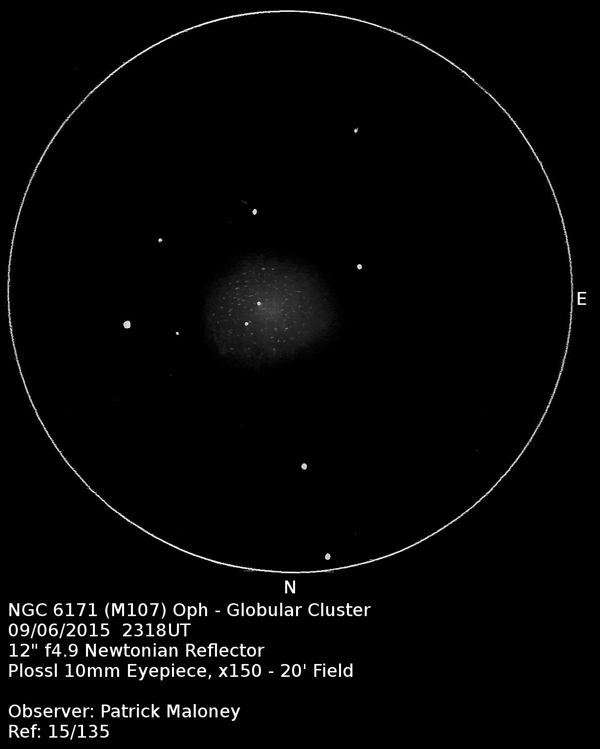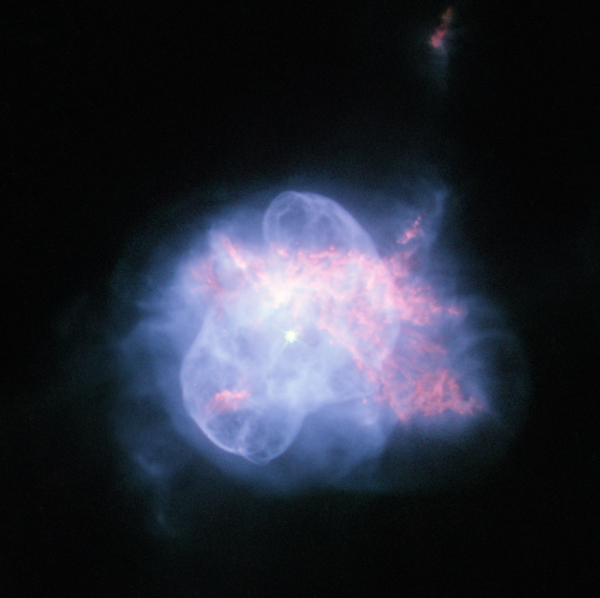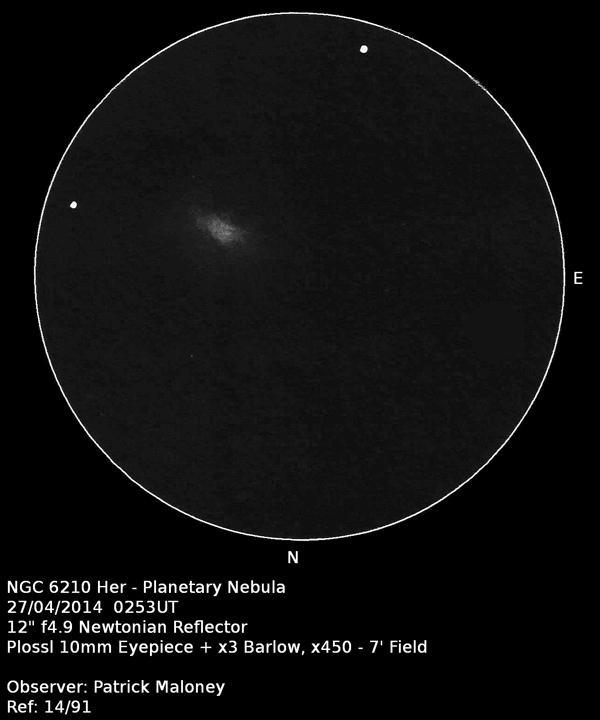NGC 6171 in Ophiuchus and NGC 6210 in Hercules
June 2021 - Nebula and Cluster of the Month
NGC 6171, the globular cluster commonly referred to as M107, was discovered by Pierre Méchain in April, 1782, and independently by William Herschel on 12th May 1793. Herschel described it as A very beautiful, extremely compressed cluster of stars. Extremely rich, 5 or 6’ in diameter, gradually more compressed towards the centre.

Note that the description given in James Mullaney’s book The Herschel Objects and How to Observe Them is the description of the objects from John Herschel’s General Catalogue of 1864, and is not William Herschel’s description.
M107 does not appear in Charles Messier’s lists of nebulous objects published in the Connaissance des Temps of the French Academy, but letters between Messier and Méchain make it clear that this object had been seen by both men. Messier had intended to add further entries to his catalogue, but never did.
Work by Helen Sawyer Hogg in the 1940s led to the inclusion of the objects now known as M105, M106 and M107 in the canonical list, and few today would argue that it is not a ‘true’ Messier object.
As a visual object from light-polluted sites, M107 presents some difficulties. Its apparent magnitude of 8.1 would suggest an easy object, but it’s relatively low in the sky (maximum altitude from mid-Britain is 23°). Also mitigating against it is its concentration. I have mentioned before that the most important measure of the visibility or otherwise of a globular cluster is its concentration class. Generally, the more concentrated a cluster, then the more visible it is.
Globular cluster concentrations range from I (most concentrated) to XII (least concentrated). M107’s class is X, ‘loose’.
From my light-polluted site, I only saw the object on my fourth attempt to find it with my 12” (300 mm) Newtonian reflector. On all previous occasions, I had positively identified the field, so I knew that I was looking in the right place. It simply couldn’t be seen.
Then, finally, on 9th June 2015 I spotted it. The fact that I could see it at all was a testament to the better than usual sky conditions on that night. The cluster appeared pretty large, though it should be pointed out that although its diameter is listed as 13’ in catalogues, its visual diameter is closer to 5’. It still appeared pretty faint to me, though it could be held with direct vision. It looked quite speckly, indicating that it consists of (just) unresolved stars. The brightest star in the cluster is magnitude 13.

When I was first making my way through the Messier Catalogue in the 1970s and 80s, there was much debate about which was the most difficult of them. M76 and M98 were often touted, following the lead of Kenneth Glyn Jones in his Messier’s Nebulae and Star Clusters. However, KGJ only listed the Messier objects up to and including M104.
M76 and M98 are both easy objects in my 12”. Barring those which are denied to me through their low declination, I would put M107 as my personal ‘most difficult’ Messier object.
By contrast, this month’s nebula – NGC 6210 is a nice, easy object. Located 30° higher, and almost due north of M107, NGC 6210 sits in Hercules, about a third of the way between β and δ Herculis and shines at a magnitude of 8.8. It is thus nominally fainter than M107, but its brightness is compacted into an object less than 20” in diameter. It was discovered in 1825 by the great double-star observer, F.G.W. Struve.
It lies about 6,500 light-years away and has a true diameter of a little over half a light-year. The central star, HD 151121 is magnitude 12, but has been suspected of being variable. When I made my observation of the planetary nebula, I didn’t notice the central star. In Visual Observations of Planetary Nebulae, Kent Wallace also notes that the central star was not seen.

Some observers have noted a distinct green colour to this object, but to me it always appears bright blue. Using my 12” reflector, I noted that it was very, very bright at x83 and that the OIII filter added nothing to the view. The nebula appears fairly homogeneous but the north side is brighter than the south, where there is some sort of darkness detectable. The Hubble image shown above (where north is up, as opposed to my observation below) shows clearly what I was seeing. The disc is slightly elongated, and outer nebulosity is visible, especially at the extremities of the nebula.

Two quite different objects, then, for this month, representing opposite ends of the spectrum of nebulae and clusters.
Patrick Maloney (DeepSkyBagger@gmail.com)
| Object | RA | Dec | Type | Magnitude |
|---|---|---|---|---|
| NGC 6171, M107 | 16h 32m 32s | -13° 03’ 09” | Globular cluster | 8.1 |
| NGC 6210 | 16h 44m 29s | +23° 48’ 02” | Planetary nebula | 8.8 |